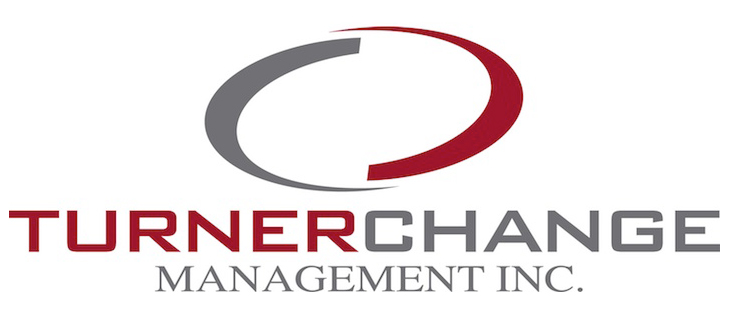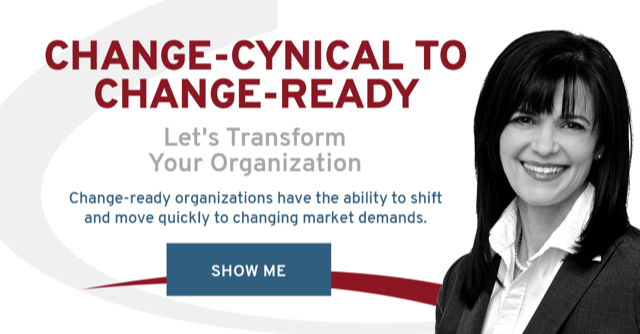Maintaining a positive outlook and highlighting the benefits of an organizational change effort is essential and helpful. However, it is possible to over-emphasize the positive and fall into the trap of toxic positivity. Toxic positivity is the belief that you should and always only have positive or happy thoughts and emotions.
Leaders who fall into this trap work maintain a façade that everything is working, even when it’s not. They try to put a positive spin on every aspect of the change. Comments not aligned with the leader’s positive view get interpreted as unfavourable, and the commenters are often labelled resistant.
I am a firm believer in the power of positive thinking. I also know the importance of talking about the benefits of any potential change. But when I hear leaders talk about putting a positive spin on a difficult situation, it raises a yellow flag. I am concerned because it raises the risk the change will fail. It also increases the risk of creating a change-cynical organization.
Recognizing the Discomfort Isn’t Negative
Many leaders believe their role during change is to keep up the positivity. That to be the change agent means to be the cheerleader. And yes, as a change leader, you need to believe the change is required and see its benefits.
However, only talking about the benefits without acknowledging the effort and work needed to achieve the outcome ignores the change process. Focusing on the benefits without talking about the reality of the transition is like talking about the benefits of winning the championship game without talking about and preparing people for the work and effort required to get there.
Communicating the benefits is necessary, but it’s not sufficient. You need to talked about the benefits while recognizing what’s required and supporting the people who will do the work to achieve the desired result.
 Let’s face it change is hard. It doesn’t matter how great the benefits, moving through the change process is risky and takes work. I have talked about this before—change is hard for everyone.
Let’s face it change is hard. It doesn’t matter how great the benefits, moving through the change process is risky and takes work. I have talked about this before—change is hard for everyone.
By only communicating the positives and shutting down questions or comments that you perceive as negative, and labelling people as resistant, you discount what a large part of your team or employees are experiencing. You are also ignoring the normal human response to change.
So, how do you avoid falling into the trap of toxic positivity? One way is to let go of the belief that people resist change and communicate with the language of readiness.
Language Matters
The language we use to describe and talk about our perceptions and our experiences determine our reality. Our language guides what we notice and enables us to make sense of what we see, hear, and feel.[i]
Therefore, the way you talk about change will affect the way you and others perceive it.
Use Language Grounded in Readiness Not Resistance
Using language grounded in readiness allows you to share the benefits of the desired outcome while acknowledging the work needed and supporting the people through the process.
For example, let’s say you are implementing a new financial system. You know the new system can generate your financial reports in half the time, allow you to track transactions in real-time, and help manage and balance the workload among your finance team—all benefits of the new system.
However, before you can realize any of the benefits, the people who need to adopt the new system must navigate their Whitespace.
Navigating the Whitespace will require them to internalize the need for change to let go of the current state. Then they must step outside their comfort zone. They will need to unlearn old ways of doing their work to learn the new technology and a different way to do the same work. Some may be required to do a completely different job. In this space, it’s normal for all humans to experience uncertainty and fear of the unknown, which is stressful for everyone. They may also feel a sense of incompetence because it takes them longer, or it feels more complicated to do the same task with the new technology.
To expect that people would not express any discomfort is not realistic. Nor does expressing their discomfort, complaining about the work or questioning the process means they resist change. It is part of the normal human response to change.
In our Living and Leading Change Course, we share with leaders how to develop a readiness mindset and use the language of readiness to communicate during change. Leaders discover how to reset their filter for readiness instead of resistance.
Because they are focused on readiness, comments, questions and feedback previously dismissed as resistance become valuable information for enabling the desired outcome.
You can talk about benefits and focus on the desired outcome without the risk of toxic positivity.
Are you looking to break the cycle of toxic positivity in your leadership? Reach out to us! I’d be happy to help.
References
[i] Eby, L., Adams, D., Russell, J., & Gaby, S. (2000). Perceptions of organizational readiness for change: Factors related to employees’ reactions to the implementation of a team based selling Human Relations, 53(3), 419.



